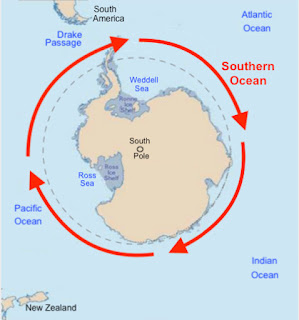A large canoe capable of holding twenty
people would hardly make it across the deep ocean
So how larger is “exceedingly large”?
In the understanding of that word in Joseph Smith’s time, Noah Webster in his 1828 American Dictionary of the English Language, says it is: “To a very great degree; in a degree beyond what is usual; greatly; very much.” Today, the word is defined as “extremely; exceptionally; tremendously, immensely.” It might also be understood that the word “exceedingly” had its greatest use between 1817 to 1844, steadily tapering off after that time to a low in the year 2000.
In Hebrew, the word exceedingly מְאֹד (meod) meant “abundantly, excessive, extremely, great, immensely, very.” Of the 50 different meanings in the Old Testament, found in 287 instances of use, it was translated as “very” in 139 of those uses; “great or greatly” 68 times; “exceedingly” 14 times, and all the others being used only once or twice, the word in the Bible basically meant “very great or greatly.”
So we can conclude that the word “exceedingly” as used in the Book of Mormon as an adjective carried the descriptive meaning of “very large ship,” or “greatly large ship,” which by the stretch of anyone’s imagination could not be a raft or large canoe.
In addition, we need to consider that in Hagoth’s time, around 55 BC, the Nephites had been in the Land of Promise over 500 years, and in Zarahemla 150 to 200 years. In all that time Helaman lists and Mormon verifies that the Nephites were involved in “shipping and the building of ships” as one of their major areas of endeavor (Helaman 3:14). Thus, the Nephites were somewhat of a maritime people who not only built ships, but these ships were used for commercial purpose.
The Land of Promise was an island surrounded
by water with numerous inland rivers requiring a shipping industry
First: he was likely a Nephite
Second: He was probably a wealthy man for he constructed a shipyard large enough to build several ships within a few years;
Third: He was a very curious man.
Now while many theorists conclude from this that Hagoth was an explorer and sailed out with the ship he built, the scriptural record does not suggest this. Thus, he did not set sail with his first ship which carried large numbers of emigrants on a course northward, for he remained in his shipyard building other ships when the first ship returned (Alma 63:7). In addition, there is no mention or suggestion that Hagoth ever went anywhere in any of his ships.
Now we come to the word curious—it was not only about having a “Strongly desirous to see what is novel, or to discover what is unknown; solicitous to see or to know; inquisitive.”
But it also meant:
2. Addicted to research or inquiry.
3. Accurate, careful, solicitous to be correct;
4. Attentive (as to detail);
5. Difficult to please; exact,
6. Make with care; artful; wrought with care and art;
7. Elegant; neat, finished (as curious work);
8. Particular; exactness of workmanship.”
Thus, we can conclude the Hagoth was a maker of things unusual—ships that were exceedingly large that transported large numbers of people to distant lands.
It is also seen that Hagoth and Mormon’s description of the man, his work, and results have been misunderstood by Mesoamerican, Heartland and other theorists, and who misrepresent him in their writing.
Regarding this, we might ask:
2. What was the size and design of Hagoth’s ships? Some Mesoamerica scholars, such as John L. Sorenson, suggest that Hagoth’s ships were little more than very large dugout canoes with built-up sides or log rafts with sails, and certainly not complex planked vessels resembling later European ships. However, the facts do not seem to bear this out. So according to the scriptural account, one of these exceedingly large ships:
An ancient single sail
ship driven forth before the wind
• Was, in addition to carrying people, big enough for extensive immigrant provisions meant for colonization, which might have included domestic animals, such as cows, goats or sheep;
• Was built by a master craftsman who constructed other ships;
• Was seaworthy enough that after nearly a year at sea was immediately able to embark on a second, lengthy voyage, apparently without repairs.
This hardly sounds like a dugout canoe or log raft, no matter how large. While a group of adventurers might undertake such a voyage upon a meager craft, such as Thor Heyerdahl and his group on Kon-Tki, and other raft vessel voyages, men seldom venture forth with their wives and children in such dangerous or tenuous circumstances, especially with the intent of migration.
Consequently, since they were taking families and supplies on this voyage, and many people were involved, these ships had to have been quite large, and obviously more involved than simple dugouts or rafts. In fact, Mormon calls them “exceedingly large ships” (Alma 63:5)
(See the next post, “Were Hagoth’s Ships Canoes or Rafts, or Something Else? – Part II,” for more on the construction of Hagoth’s ships that carried emigrants to a land :”which was northward.”

































